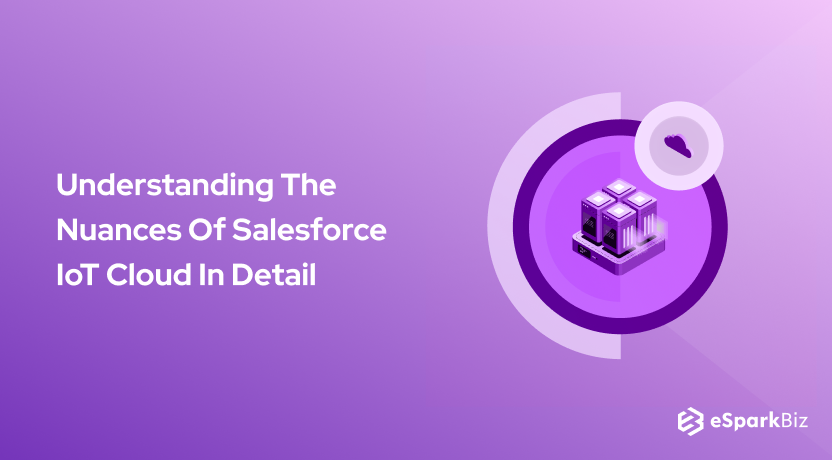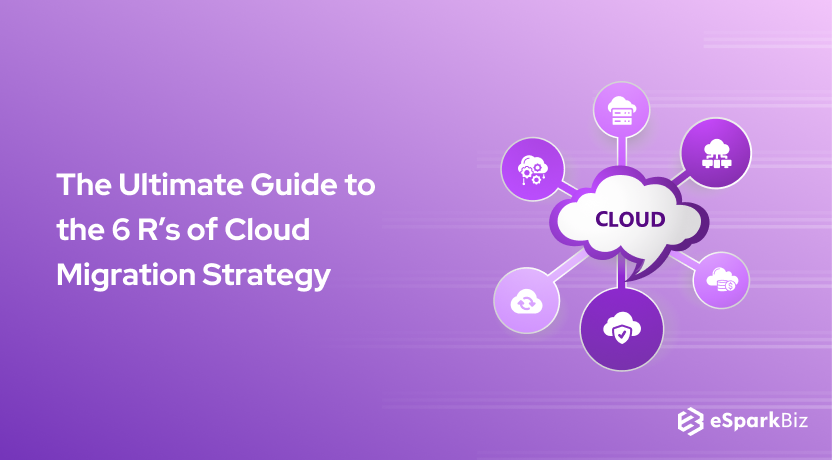With a well-thought approach, the big data generated by these devices can actually prove to be rather valuable for service providers.
A lot of businesses have already discovered the innumerable benefits of CRM systems to tackle customer-related processes. Salesforce IoT has emerged as the leader in offering excellent customer management solutions.
What Is Salesforce IoT?
The Salesforce IoT Cloud was launched in 2015 in order to provide a platform for processing and storing data from the connected devices.
It was powered by Thunder, their proprietary real-time event processing engine that can easily handle large amounts of data.
In 2017, IoT Explorer Edition, a new IoT initiative by Salesforce was launched. It is a powerful interface for creating low-code apps on top of IoT data.
But, Salesforce hoped to tie more of its products to IoT data. As a part of the Salesforce IoT Explorer license, IoT Insights component was added to Field Service Lightning mobile app and Service Cloud.
How Does Salesforce IoT Work?

Salesforce IoT works through creating rules, events, conditions, actions and orchestrations.
Let’s take an example into consideration for better understanding:
- Let’s assume a failure detected in the customer’s device. The sensor will trigger a change in the condition of the device to ‘Error’. This will start the ‘Fix It’ orchestration.
- The state of Error follows a set of specific guidelines. This is a predefined rule which tells the orchestration the steps to be taken for rectification.
- It could be a simple action like creating a ticket for the team at the service desk or clever combinations of conditions, actions and events.
For instance, Salesforce IoT can send the customer a relevant and helpful article automatically in case the problem can be fixed easily without the need of professional assistance. Additionally, the ticket can be escalated if the problem is complex and needs the assistance of a specialist.
- After the Error rule executed by Salesforce IoT, status changed to ‘In Progress’. Once the sensors determine that there is no issue, the device transitions to the ‘Ok’ state.
The above-mentioned explanation is absolutely straight-forward and illustrates the processes very well.
IoT cloud Salesforce allows the data from different sources including third-party services, sensors, service cloud, CRM, field service and more to put together.
This ensures that the orchestration can be as efficient as possible in order to deliver exceptional customer service.
Understanding Salesforce Approach To IoT
Salesforce IoT works with the main aim of enriching the available services with the benefits of big data acquired from connected devices.
The idea is also to enable the CRM users to design and customize applications to manage the data. Salesforce offers a platform known as Salesforce IoT Cloud to store and process these data.
An event-processing engine named Thunder designed to filter, capture and respond to incidents in real time.
Thunder takes its basis on the open source tools:
- (a.) Apache Storm: real-time big data processing platform
- (b.) Apache Kafka: a messaging system that can tackle large volume of reads and writes per second
- (c.) Apache Spark: dispense large-scale data processing framework for batch and streaming data
- (d.) Apache Cassandra: distributed database management system
Incoming data handled by Kafka while Spark extracts the profile information from Kafka and transfers it to Cassandra for updation. This data used by Storm to tackle real-time events.
The technologies run on Heroku PaaS which sustains the development environment and amalgamates other cloud services. The connected devices regulated by Amazon Web Services.
RESTful API is to transfer big data from the sensors to the Salesforce IoT Cloud and from the Cloud to manage actuators and applications.
Salesforce IoT Cloud Data Analytics

The Salesforce IoT Cloud absorbs innumerable events per day. In iot app development company, data processing tools are a crucial architecture component to focus on.
Einstein Analytics used by Salesforce in order to enhance data processing. A business analytics software designed completely in the cloud to assist CRM users to find useful insights.
By assessing the data from Salesforce and from external sources like traffic schedules, energy prices and weather forecasts, CRM users can achieve a bigger picture and make predictions.
The best way of visualization picked automatically by Einstein which could either be metrics, charts or diagrams. Users prompted to create a story so as to create reports that are easy to read.
Salesforce IoT Implementation Algorithm

Plan → Connect → Transform → Build → Deploy
Let’s understand each step carefully:
Plan
There are two major goals to achieve here:
- Recognizing Triggers: This is an important element that you can not automate. The significant customer experience moments discovered and major events spotted which can either make the customer really happy or very upset. The trigger events will vary between different companies and industries.
- Creating Actions: Envisioning the best solutions for the recognized problem. The best way of resolving the issue has to be thought of.
Connect
This is the stage where you have to choose data sources to connect so as to offer the requisite contextual data.
Transform
As machines understand logical terms, the problems of the customer have to be described in technical terms. For instance, in case of a problem, the sensor can alert the system and can either create a service ticket or help customers resolve the problem.
Build
Salesforce IoT allows users to add new orchestration rules and design the requisite logic using the expression syntax used in formula fields. This will make it easier to work with Salesforce’s existing data.
Deploy
You can activate the orchestration and access the traffic view to have a better understanding of devices or people in each state.
You should test whether or not the orchestration designed appropriately before implementing it.
The Salesforce IoT platform trackers in this case are really beneficial and can execute the task really well. It can help offer a detailed view of the orchestration activity and provide assistance in identifying any unwanted results.
Benefits of Salesforce IoT Cloud
The benefits of Salesforce IoT cloud are many and mentioned below are a few of them.
No Code Technology
The Salesforce IoT uses a low code approach that helps business executives to carry out their IoT processes without requiring the help of an IT professional.
This allows businesses to set up triggers and responses as IoT manages the bulk processes for you.
The IoT device data is sent to the Service cloud or the marketing cloud via IoT actions in order to automatically create a lead for the customer.
This low code approach helps reduce costs considerably and aids organisations in testing business ideas without the need of programming codes.
Enhanced Customer Acquisition
With each product connected to the cloud, the sales team will be able to acquire information about every product in detail.
The team can single out which item is nearing a warranty deadline, which product is outdated, which product has failed to perform as per the set standards or if any product has had a massive update.
This data can be utilized in numerous ways by business executives to ameliorate sales processes. With this information, businesses can target customers who may have shown interest in a specific product.
Custom offers can be created which the customer can benefit from before the warranty deadline ends. The Salesforce IoT Cloud can be used to automatically carry out these actions by defining a set of guidelines.
For instance, a rule can be set based on performance metrics and whenever the product performs below the standard, the sales and customer support team will be alerted to look into the matter.
The data collected can be leveraged in a number of ways to predict and assess customer behaviour and their needs. The IoT Cloud Salesforce with its entirely automated process amplifies customer acquisition and retention.
Customer Context
Customer context is the automated learning aspect of Salesforce IoT cloud that assesses and stores past actions and behaviours when making real-time decisions.
It takes customer history, location and service history into account and combines it with the IoT device data in order to give a clear picture of what’s happening.
Integration With Enterprise Applications
Salesforce IoT cloud integration with enterprise applications guarantees a steady flow of relevant data between corporate systems. In fact, Web Development With IoT is an option now. So, you can develop enterprise level web apps as per you need.
Additionally, Einstein Analytics can use this data to give all-round reports and make meaningful conclusions from information that is available about products and customers.
Improved Data Analytics
Salesforce IoT Cloud uses Einstein Analytics, software designed in the cloud in order to improve data processing. Einstein analytics allows CRM users to gain insights from website logs, sensor data and appropriate ERP records.
This data from Salesforce and other external sources can then be used to make future predictions. Einstein chooses the best visualization tools automatically like charts, metrics and diagrams.
Users prompted to create a story in a way that makes the reports easy to comprehend and remember.
With Einstein analytics, users are enabled to design and customize their own analytics applications using pre-designed dashboard components.
Read also: 40 Top Internet-of-Things (IoT) Applications & Examples You Should Know
Limitations of Salesforce IoT Cloud
While innumerable benefits associated with Salesforce IoT could open up promising new opportunities, there are certain limitations as well.
Mentioned below are a few of those limitations that could hamper the implementation and adoption process.
Data Privacy Concerns Of The Customers
Customers may feel that their privacy violated if they realize someone is gathering data about them constantly.
It can however be agreed whether or not the customer is willing to share their personal data to the service or product provider.
Security Vulnerabilities
Large volumes of data mean not just extending customer profiles but also the need to protect the data. Overcoming the IoT Security Challenges is key to your success.
One can steal big data from things connected to the customers and then cybercriminals or competitors use it to their advantage.
It gives rise to additional concerns regarding how to make the available data and connections more secure. There should be an introduction to the effective procedures of the user and device identification.
Flexibility Limitations
The biggest advantage associated with IoT Cloud Salesforce is the fact that it allows a wide range of users to build their own customized apps with no prior knowledge of programming.
Users can design their own app using pre configured elements that execute certain operations. While this may be helpful for businesses, what if the functionality of those elements is not enough?
A few users may need more access to the programming components of the platform so as to customize the app that covers their distinct business needs.
However, the preconfigured elements in this case would be more of a limitation than an advantage.
What Businesses Can Get From Salesforce IoT Combo?
Salesforce IoT can provide actionable insights which can help in:
- Getting a unified view of customer data
- Increasing customer loyalty and rate of retention
- Enhancing customer experience and delivering exemplary service
- Improving productivity through automation
- Diagnosing problems remotely
- Reducing the time that it takes to resolve product issues
- Making informed strategic decisions
- Increasing Sales
How Salesforce IoT Improves Customer Experience?

Regardless of whether it’s a hospital or a farm, Salesforce IoT helps businesses to acquire critical data of the customers immediately.
Streaming data allows the service and product providers to be proactive and provide assistance to their customers even before the issues become way too evident.
Rather than being upset about a damaged product or interrupted service, customers would be provided with an action plan or solution right when they really need it.
Having a proactive approach averts service quality claims and aids in resolving service tickets efficiently. You can offer solutions well before the customer reports a problem. This will result in the overall performance of the product being way smoother.
Companies this way would no longer have to constantly bother customers by asking for their information. They already would have a clear understanding of the problems at hand.
Conclusion
For a business to remain successful and establish itself as more reliable than its competitors, the customer data has to be updated regularly.
Businesses also need to assess this data and address the expectations and needs of the customer. Salesforce IoT Cloud can help companies get their hands on the big data that customer generates and then use it in meaningful ways.
It is in fact the most effective solution for users with no prior programming skills who wish to design their own apps.








